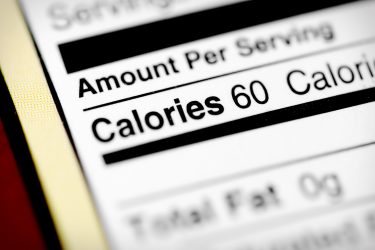What effect does new UK food legislation have on smaller businesses?
- Like
- Digg
- Del
- Tumblr
- VKontakte
- Buffer
- Love This
- Odnoklassniki
- Meneame
- Blogger
- Amazon
- Yahoo Mail
- Gmail
- AOL
- Newsvine
- HackerNews
- Evernote
- MySpace
- Mail.ru
- Viadeo
- Line
- Comments
- Yummly
- SMS
- Viber
- Telegram
- Subscribe
- Skype
- Facebook Messenger
- Kakao
- LiveJournal
- Yammer
- Edgar
- Fintel
- Mix
- Instapaper
- Copy Link
Posted: 14 February 2022 | Alex Marsh | No comments yet
Alex Marsh, CEO of pre-prepared home delivery service Tweakd, examines the impact new UK food legislation may have on smaller businesses and how tech could help out the independent.


Draft regulation has already been put before the House of Commons
Last year saw a bit of an upheaval for food labelling, and for very fair reasons. Regardless, complying to the new rules isn’t without its challenges.
While it’s hard to find fault with legislation that is designed to give consumers more information and to protect those with allergies and intolerances, it’s far too often the case that these changes unwittingly favour larger organisations over the small independent businesses.
And what about the future? Are we to expect a further raft of legislation around food information that will crush the viability of small catering businesses?
In 2021, we saw the implementation of Natasha’s Law in the UK, following the tragic passing of Natasha Ednan-Laperouse as a result of a severe allergic reaction to sandwich that contained sesame seeds, but was not labelled as such. The legislation took force at the start of October 2021 and requires that food in the UK that is pre-packed for direct sale (PPDS) includes full ingredient labelling. This legislation covers a range of food types, from sandwiches that have been boxed up ready to grab and go, to packs of sausages that have been sealed in a tray in a butchers. Fast food outlets are included in the scope of the legislation too – a burger that’s been wrapped up ready to buy before the sale is made falls into the PPDS category for example.
The specific requirements of the legislation dictates that food pre-packed for direct sale is labelled with the name of the food and the ingredient list with the 14 key allergens – that we have to declare by law – clearly emphasised. In practice, this means retail-style ingredient lists with allergens either highlighted in bold and/or declared in a separate ‘contains’ statement.
What effect will this new food legislation have?
If you are required to abide by Natasha’s Law, then you need to have identified exactly what products will be used in each meal – so you need a proper buying list, usually with product codes. This is so your staff can only ever buy the right product. You will also possibly need to consider substitutions, so if the prime product is out of stock, then you have a approved backup that has the same allergens/ingredients.
Then you need to put the ingredients of all of those products together. Customers have become used to retail packaging which lists ingredients in order of highest proportionate use. So whilst you can do this manually, as part of a laborious process, it’s not easily done. Consider the fact that you will most likely be using these products in batches grouped together and in sub-recipes, rather than as they come. Some will be cooked batches, so you then need to factor in reduction or gain by absorption (think pasta and rice) to ensure your ingredient list remains in the same proportionate order. That’s possible using a spreadsheet, but it’s not easy, and it’s an absolute nightmare to maintain. If a product is no longer manufactured and you have to replace it, then you have to go back and replace it in every location where it is used.


New regulation on calorie labelling is also set to come into force later in 2022
Then, once you have your ingredients list for your labelling, you need to ensure that what your team cooks and assembles each day results in a product that has exactly the same ingredients as what is on your label. You can’t leave anything to chance – you need to provide them with detailed specification cards for recipes and batches to ensure what they make every day is consistently what you intend it to be.
By now you’ve got a monstrous pile of documents and spreadsheets, and that’s before we’ve even looked at your menu or your website – ideally, you’ll be wanting to put what you sell on some form of digital or physical menu, or most likely both, and that will need to display the allergens and dietary suitability too. Yet more labour.
This is where the local independent can really struggle. There are resources, like tick lists for allergens, but when you get into ingredient lists you just have to have things done properly, otherwise you cannot really demonstrate that you can physically deliver what you claim on your labels.
And don’t get me wrong, it’s very important that we do this – we need to avoid any more tragedy as much as possible. We just need to adapt and find ways of doing so that aren’t confusing or unnecessarily labour-intensive!
There is help out there
Fortunately, we live in a world where technology exists to make many things a lot simpler and more painless – and here is a perfect example. Ironically, technology can be used to skew this issue in favour of the ‘little guy’, by making use of some of the very clever recipe management systems out there. Using one of these, it is possible to define what products the team can buy, build your recipes and batches, and use these to produce easy-to-follow specification guides. If a product changes, you change it once.
These systems can even be used to link into menu publishing tools that can automatically generate your printed menu design and keep your website updated. Sounds like seriously futuristic stuff, but it’s here and surprisingly affordable. It is even possible to link your recipe database into a labelling system, so all your recipes are sent straight through to a system that then prints the packaging labels for you.
All this is really manageable when you’re a small business, with a few local suppliers – ironically, it’s then a bit more of a challenge when you’re a big national with multiple brands and a complex network of suppliers – but then they’ve got the HQ head count to sort that!
The beauty of all this is that while the initial purpose might be compliance with new food safety legislation, the knock-on effect is serious operational efficiency. Suddenly manual labelling that took hours can be done at the push of a button. Training is miles easier because you have recipe guides. Customer confidence is better because you have all of the right info provided in a really accessible way for them – it’s a completely virtuous circle.
More food legislation: calorie labelling and HFSS
In April 2022, the UK Calorie Labelling Regulations will kick in, which require any businesses with more than 250 employees that provides food for immediate consumption to declare the energy content of their meals.
The upcoming HFSS (food and drink high in fat, sugar and salt) advertising restrictions are already signalling the direction the Government wants to take in the battle against childhood obesity, and it’s hard to find fault with its aims here. But again, this is where it pays to be prepared – if business owners do the work now and make sure they’re making use of technology to get their operations really slick and efficient, then they’ll have calorie, ingredients and nutrients information, as well as dietary suitability, etc., in an easy-to-display form.
Time to invest
Times are pretty tough right now and nobody wants to have to invest in new tech or equipment, but there is opportunity for those who can – and do. There will be, unfortunately, businesses that do not survive the current pandemic. But one can pretty much guarantee that those that do, will be the ones who have used the pandemic to become more efficient and better; and as a result, will emerge leaner, hungrier and much more customer focused.
About the author
Alex Marsh has spent 20 years in and around hospitality and catering, including a varied career guiding the growth of some of the UK’s most loved hospitality groups. He has also set up a successful consultancy company and food manufacturing brands as well as COO of a software company specialising in menu information. He is currently the CEO of pre-prepared meal brand Tweakd.
Related topics
Allergens, Equipment, Food Safety, Health & Nutrition, Ingredients, Obesity, Packaging & Labelling, Regulation & Legislation, retail, Technology & Innovation, The consumer, Trade & Economy









